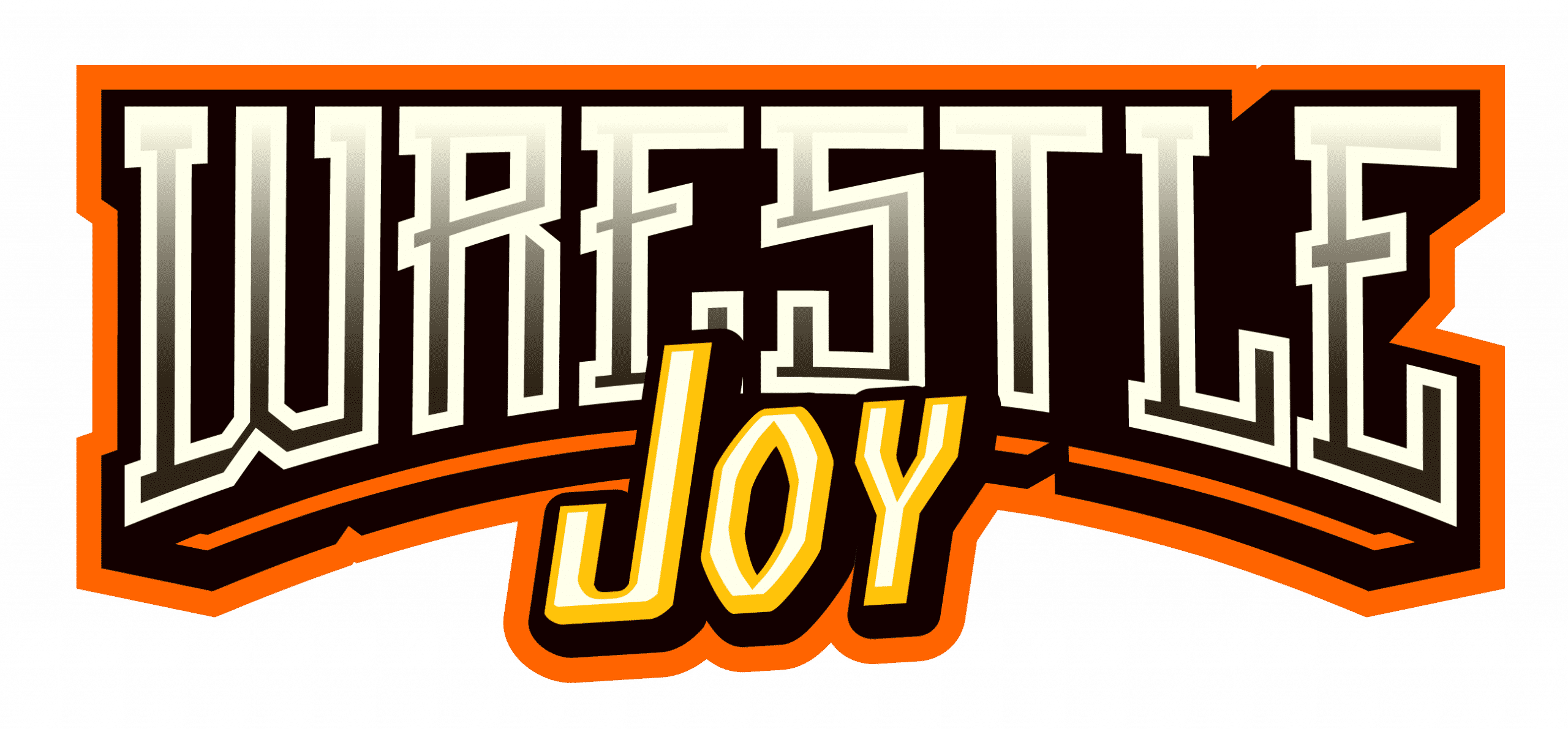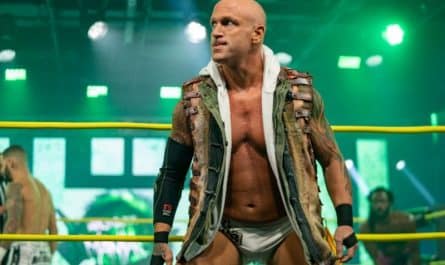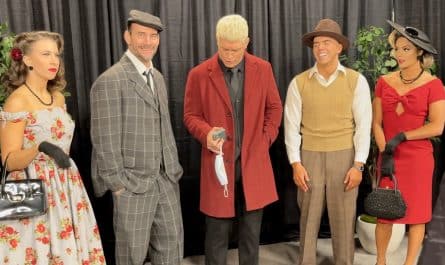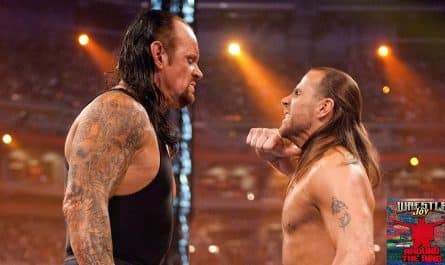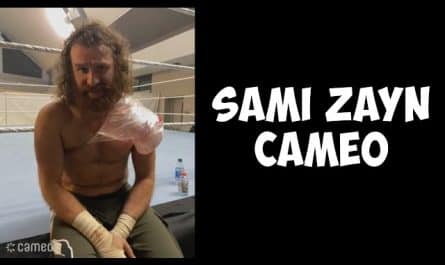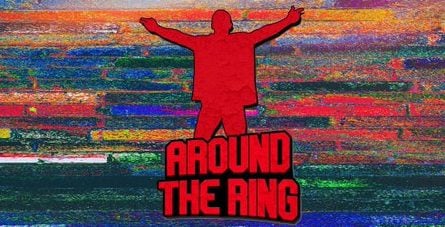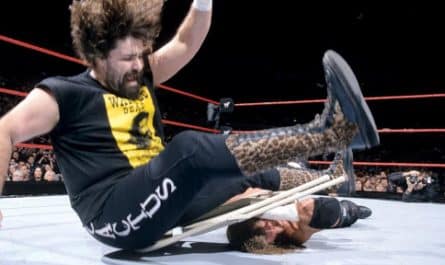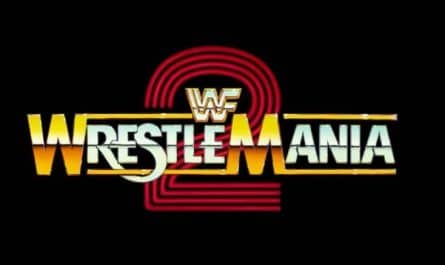Tonight on TNT, All Elite Wrestling will present what could be its most anticipated televised event. AEW has made no secret in being the spiritual heir to Jim Crockett Promotions and its successor World Championship Wrestling. On this night, they will unleash what many have called Dusty Rhodes’ greatest creation. Two rings wrapped in steel with two teams of five fighting ’til one man either submits or surrenders. Thanks to WWE wrangling in all of the former JCP/WCW trademarks, the match will be called Blood & Guts. Fans who grew up with wrestling at 6:05 on the Superstation know it by another name: WarGames.
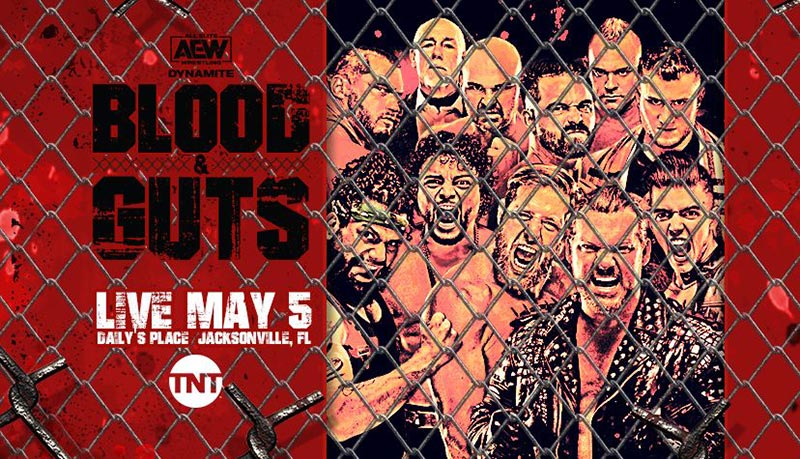
In the summer of 1986, Dusty Rhodes convinced Jim Crockett to tour their company in stadiums across the eastern half of the US. It was called The Great American Bash. A year later, the company looked much different, having absorbed Bill Watts’s UWF (the former Mid-South Wrestling). Though Crockett and Rhodes intended to keep the UWF as a separate brand, the experiment was already failing. Many of Watts’s top stars, like Jim Duggan and Ted DiBiase, left promotion before the transition, leaving the UWF with mid-card talent.
Meanwhile, on the Turner Network shows, the JCP/NWA stars went out of their way to bury the UWF and its talent. What could have been a yearly Super Bowl rivalry between two companies under the same brand fizzled almost immediately. If that scenario sounds familiar, the aborted WCW InVasion ran an eerily similar trajectory with identical results.
While Rhodes had no intention of elevating the UWF, he did plan to continue the feud between himself and the Four Horsemen. Amazingly, even after offering fans the same rivalry, now in its third year, it still drew strong houses. However, business started to taper in 1987. To ignite the second round of Bash tours, Rhodes knew he needed to do something different this time across the entire country. After watching the film Mad Max: Beyond Thunderdome (no single film series has had more impact on pro wrestling than George Miller’s post-apocalyptic classics), Rhodes became inspired.
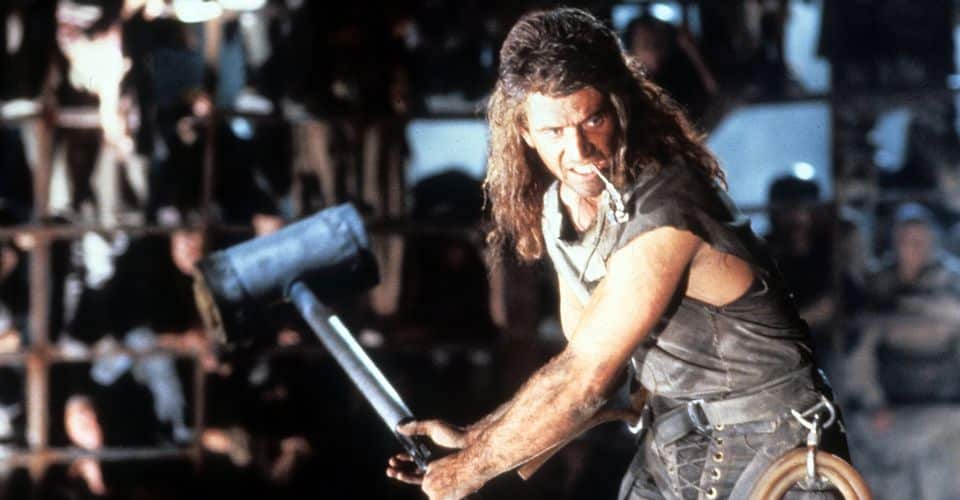
In the film, the titular hero, “Mad” Max Rockatansky, enters the world of Bartertown, ruled by the maniacal Aunty Entity (music superstar Tina Turner). To win back both his car and his life, Max is forced to battle the brutish Blaster inside a domed cage appropriately called Thunderdome. Two men enter, but only one man leaves. Suspended from bungee cords, the combatants reach for weapons attached to the cage walls. The imaginative fight sequence, which holds up shockingly well, ends when Max shows mercy on the monster with the brain of a child.
Remembering a famed Georgia Championship Wrestling match between Buzz Sawyer and Tommy Rich from October of 1983, Rhodes drew inspiration. The notorious Last Battle of Atlanta, held in the Omni Arena, sported a uniquely designed steel cage with a fenced roof. Rhodes took the basic design of the LBOA cage and incorporated the second ring. Then Rhodes added the staggered entries, which allowed the heels to maintain a one-man advantage until the final entry when the final babyface finally evened the score.
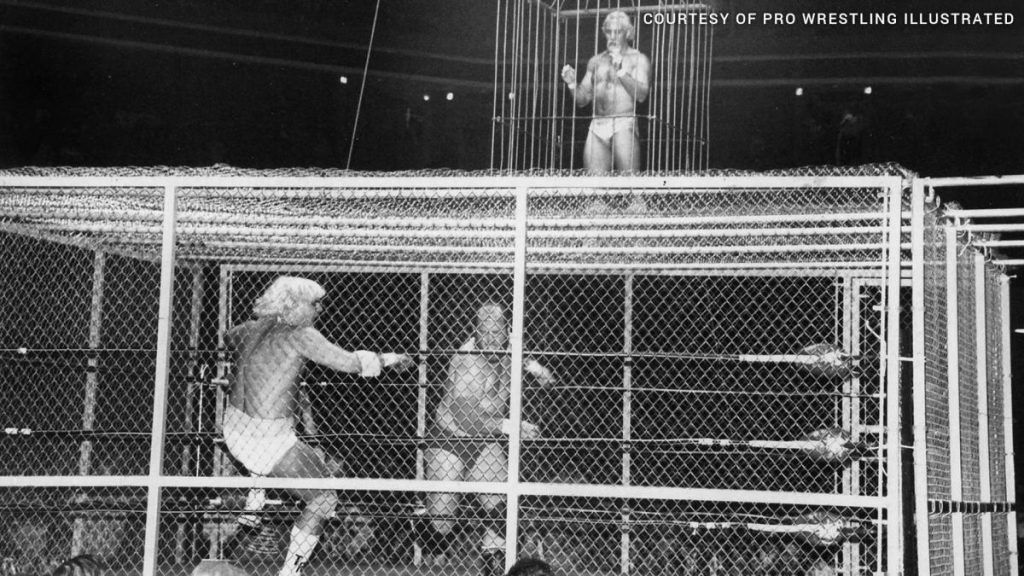
Credit: PWI, Pro Wrestling Illustrated
The Match Beyond element began with all combatants in the ring. Rather than use a simple three count, Rhodes channeled the shocking ending of the steel cage I Quit match of Magnum TA and Tully Blanchard, making the match surrender or submission. One team would have to beat the other until they couldn’t fight any longer. In 1987, getting a top guy to submit was rare (making the Starrcade 85 Magnum/Blanchard match even more memorable). A solution presented itself in another element of the Last Battle of Atlanta. Precious Paul Ellering, Sawyer’s manager, was locked in a separate cage, so when the babyface Rich won, he’d get time in the ring with Ellering. If Rhodes could incorporate managers into the match itself, he’d have an easy victim to take the loss. Plus, what JCP fan wouldn’t want to see JJ Dillon, the vile manager of the Horseman, take a well-deserved beating?
The most surprising turn of Rhodes’s brainstorming was calling the match WarGames, after the Matthew Broderick nuclear war film, instead of ThunderDome (that was saved for something else). WarGames debuted on July 4th, 1987, inside the same Omni arena as the Last Battle of Atlanta. This time Paul Ellering was on the babyface side, fighting with his charges, The Road Warriors, as they teamed with the Superpowers (Rhodes and the red hot Nikita Koloff) to face the Horsemen team of Lex Luger, the NWA World Tag Team Champions Arn Anderson and Tully Blanchard, NWA World Heavyweight Champion Ric Flair and the doomed Dillon. The event was a smash hit, packing 13,500 rabid into the Omni.
If the Royal Rumble is the greatest gimmick match created by the WWF/WWE, then WarGames is the NWA/WCW’s counterpart. While the WWF offered colorful characters in a larger-than-life setting that skewed to kids, JCP appealed to the older male demographic. The WWF was a fun show for the family. WarGames was violent and dangerous. Poor JJ Dillon suffered a separated shoulder on top of several gashes while being decimated by the Road Warriors.
The Omni Bash, the fourth night of the tour, became the last JCP event offered via closed-circuit television. Rhodes booked a WarGames rematch on the final night of 87 Bash tour in the Orange Bowl in Miami with The War Machine (Big Bubba Rogers aka The Big Bossman under a mask) subbing for the injured Dillon.
A critical and financial hit for the company, Crockett booked more WarGames matches for the 1988 Bash tour. However, the Kevin Sullivan-created Triple Cage Tower of Doom match highlighted the 88 Bash pay-per-view. Sullivan was a great booker, but his answer to WarGames paled in comparison.
When JCP was purchased by Ted Turner, the new regime, to be called WCW, brought the WarGames concept back with the 1989 Great American Bash. The Road Warriors returned to the games, teaming with their former rivals The Midnight Express and Dr. Death Steve Williams to face The Freebirds (Michael Hayes, Jimmy Garvin, and Terry Gordy) and The Samoan Swat Team (aka The Headshrinkers). The match was fun, but it’s the semi-main event on a show headlined by an intense Ric Flair/Terry Funk fight for the NWA title.
WarGames debuted in WCW-proper in 1991. The reborn Horsemen (Flair, Barry Windham, Larry Zbysko, and Sid Vicious) faced Sting, Brian Pillman, and the Steiner Brothers. The match is memorable for Sid Vicious nearly murdering Pillman with a powerbomb. The match ends with Pillman being unable to continue, which was the planned finish. Watching the gruesome drop, it’s probably not too far from reality.
In 1992, with the Horseman gone, WCW was ruled by Paul E. Dangerously’s Dangerous Alliance (Ravishing Rick Rude, Bobby Eaton, Arn Anderson, Larry Zbysko, and a young Steve Austin). Sting teamed with Ricky Steamboat, Dustin Rhodes, Barry Windham, and former enemy Nikita Koloff team in what might be the most violent version of the match. The intricate details, deep storytelling, combined with massive amounts of blood, and the ring falling apart make for the most intense and memorable WarGames match. Zbysko clocks Eaton with the hooked metal turnbuckle and Sting slaps on an armbar submission in what might be the best WarGames match in history.
In the Eric Bischoff era, WarGames found a home as part of the yearly Fall Brawl pay-per-view, but as an annual match on the card, the event losses its luster. Much like WWE’s Hell in a Cell event, matches are shoehorned into the two-ringed cage, rather than being something special used to settle big feuds. The final WarGames match in WCW was a sloppily-booked Vince Russo Nitro where Kevin Nash inexplicably defended the WCW title in a WarGames team match. Nash succeeded but like most of Russo’s tenure, what happens in the ring is illogical and unmemorable.
When WCW was bought by the WWE in 2001, many assumed that it would only be a matter of time before WWE unleashed their own version of the match. Instead, they created the Elimination Chamber. Fans would have to wait until 2017 for NXT to unveil their own version of WarGames. To the chagrin of longtime fans, the WWEGames took away the domed cage, let the entire team enter at once, added a third team, and allowed pinfalls. In the end, the NXT version is really just WarGames-in-name-only. The sheer brutality and violence are replaced by typical WWE-style hardcore tactics.
Many promotions tried to create their own versions of the match on the independents, like TNA’s Lethal Lockdown. Major League Wrestling (MLW), under promoter Court Bauer, ran a WarGames match in 2003 with Terry Funk, Steve Williams, The Sandman, Sabu, and Bill Alfonso against the Extreme Horseman (Steve Corino, Barry Windham, Simon Diamond, PJ Walker aka Justin Credible and CW Anderson).
When the promotion returned in 2017, they again ran the WarGames with John Morrison, Shane (Scott) Strickland, Barrington Hughes, Kotto Brazil, and Tommy Dreamer facing Abyss, Jimmy Havoc, Sami Callihan, Madman Fulton, and Leon Scott. Along the way, the always sharp Bauer acquired the WarGames trademark. WWE had to purchase it back from Bauer to run the NXT matches,
AEW tried to launch their version of Blood & Guts last spring with the Elite vs. The Inner Circle, but the Covid 19 Pandemic derailed those plans. Until tonight when the Inner Circle faces the Pinnacle in a match that promises to harken back to the days of JCP on TBS.
Long live the Match Beyond! Long live Blood & Guts!
